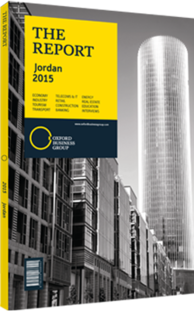Bishr Baker, Managing Partner, EY, Jordan and Iraq, on Jordan’s energy challenges: Viewpoint

Progressive and proactive, Jordan’s stance on energy is a product of necessity. Turbulence within the region has created waves that have burdened economies, including Jordan’s, with a trade deficit.
Jordan currently imports over 95% of its energy requirements, and the loss of reliable and cheap energy supplies from Egyptian gas lines means that the kingdom has had to revert to the use of fuel oil and diesel for the purpose of power generation. Hence, Jordan’s economy is certainly vulnerable to international oil price volatility. This has, in fact, increased its energy bill to a quarter of GDP in recent years. Although the recent declining trend in oil prices, which began in June 2014, came as considerable relief to the Jordanian economy, it is important that we continue efforts to diversify our energy sources, given that the sustainability of these low prices is somewhat questionable.
The result of this has been to shift away from subsidised energy bills, a move keenly felt by consumers. However, with gross public debt increasing to almost equal GDP, this was a necessary move. The money that has been freed up by the reduction of subsidies should be fed back into the economy as capital expenditure on water and energy projects, as well as other planned developments such as infrastructure.
A crude oil dependent economy, as we have learnt, is a risky one and risk mitigation is crucial. When fiscal reserves are low, diversification must be sought in order to help contain a rapidly rising energy bill. In this sense, Jordan has reacted well, implementing a wide range of projects and putting a long-term vision in place for our energy needs.
EY studies indicate that Jordan is the leader in the Levant region, and third in the Middle East and North Africa region, after Saudi Arabia and the UAE, in terms of renewable energy investment potential. This is mainly due to Jordan’s successful policy initiatives which include government-imposed feed-in tariffs and tender laws. Renewable energy strategies are set to cover one-fifth of Jordan’s energy demands by 2020. Backing new, clean technologies, through attractive tariffs and guaranteed government uptake of production, directly helps strengthen investor interest and consumer relations. Five wind plants and 15 solar energy plants are expected to come on-line within the next few years with some of these projects already in their closing phases.
In addition to renewable energy, Jordan’s National Energy Strategy aims to develop civil nuclear power and oil shale as sources of energy. The strategy hopes to transform the kingdom from a net energy importer to a net electricity exporter by 2030, in spite of a rapidly increasing population. Jordan has also recently inaugurated a new liquefied natural gas terminal in Aqaba in order to increase the efficiency of the fuel mix used for energy generation. Furthermore, the Iraqi-Jordanian oil and gas pipeline, earmarked for completion by 2020, should contribute to stabilising the sources of energy imports and help to smooth cost curve projections in the future.
The planned easing of dependency on foreign sources of energy, combined with the increasing diversification of the energy mix, should signal relatively stable times ahead in comparison to the shortages seen in recent years. However, the challenge lies not only in implementing these policies, but in clearly and consistently enforcing infrastructure guidelines for planned projects so that they are not limited by inefficiency or lack of grid capacity.
Successful implementation of these projects will begin to shrink the trade deficit that constricts Jordan’s expenditure and erodes the reserves which sustain the value of its currency. Jordan’s reserves will no longer be spent on bills determined by the will of a volatile energy market. A solid currency coupled with a reduced deficit will vastly help to control the rapidly rising prices witnessed in the country in years past.
You have reached the limit of premium articles you can view for free.
Choose from the options below to purchase print or digital editions of our Reports. You can also purchase a website subscription giving you unlimited access to all of our Reports online for 12 months.
If you have already purchased this Report or have a website subscription, please login to continue.

